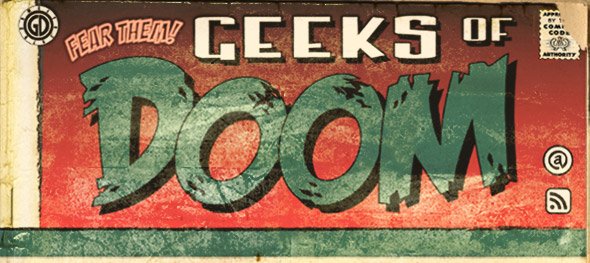
Today is the 75th birthday of one of the great characters in the history of the animated genre, and in many ways, one of the greatest comedians of all time, the irrepressible Bugs Bunny, whose slick, extremely sharp and cunning personality, in which he employed a take-no-prisoners approach in the most side splitting ways to mow down his numerous adversaries in countless animated shorts, has endeared him to countless generations of fans to this very day.
Without question the top draw and flagship character of the myriad of many colorful ones to come from the legendary minds of Warner Brothers’ cartoon division (and realized by men like animation pioneers Tex Avery, Friz Freleng, Bob Clampett, Robert McKimson, and Chuck Jones), Bugs Bunny is a reflection of a Groucho Marx come to life. A vivid radical, break-all-the-rules, set new ones and smash those as well, and live every nanosecond as unorthodox as possible and on the fringes of the fringes of life, in which he did whatever it took to destroy his many adversaries (Elmer Fudd, Daffy Duck, Yosemite Sam, etc). Bugs did it all for simply hitting the bullseye of achieving a level of self fun which stretched to the apex on a mission to simply eradicate boredom, and in which by doing so, he ultimately did the same for us as well.

From the biggest authority figures to regular Joes and even other animals who may have double-crossed him, Bugs would always come back with the triple cross and would use any and all tactics to plot his revenge on his quarry. Whether it be dressing up in drag, concocting the most maniacal, fantastical, and epic weaponry, or using his machine gun patter of wit — which was voiced in a Brooklynese of the old school 20th century vernacular and expertly made to glorious life by the man-of-a-google-voices Mel Blanc — Bugs Bunny would do anything and at all costs to win. It was usually preceded by his devlish and audience-rousing simple line of “Of Course You Realize This Means War,” which meant that look out, the gauntlet was thrown and the game was on.
And for almost 25 years during the original theatrical heyday, which started on July 27, 1940 with Tex Avery’s wonderful A Wild Hare, which pretty much was the template for all that followed to his final cartoon in 1964 entitled False Hare and all in between, there was a gold standard that was set by Bugs Bunny and the gold standard of excellence set forth by the animators at Warner Brothers Studios in terms of humor, fast-paced narratives and wildly eclectic animation that may not have had the middle America cookie cutter kind of quality churned out by the Walt Disney studios, but exceeded that studio’s kind of mediocre mantra with its swagger and verve. Once in an interview, Ren and Stimpy creator John Kricfalusi put it best when describing the difference between Disney and Warner Brothers when he correctly assessed that where Disney was like tepid Americana-styled pop music, Warners was more likened to soul or jazz.

And some of the best Bugs Bunny cartoons do indeed swing like a Benny Goodman big band at its sonic apexes, especially in shorts like the one named after his most famous catchphrase, What’s Up Doc?, as well as Baseball Bugs, What’s Cookin’ Doc?, Hair Conditioned, Hair Tonic, The Big Snooze, Hare-Do, Rabbit of Seville, Bunny Hugged, the Academy Award-winning Knighty Knight Bugs, Rabbit Seasoning, Rabbit’s Kin, and scores of others. In each of them, one marvels not only at the rat-at-tat flow of the dialogue (written by masters like Michael Maltese and Tedd Pierce) and the fluid animation, but also in the way of presentment; it’s not a stretch to say that watching Bugs hustle and flow on screen is akin to watching an animated visual amalgam of Harold Lloyd, Buster Keaton, The Marx Brothers, Charlie Chaplin, all Three Stooges, and Jerry Lewis rolled up in one.

Like all those aforementioned artists of comedy’s finest, they too wormed their way around the normalcy that was everyone and everything else in their films, and like them, they used pathos as always a deceptive tool in which the biggest punchline usually followed immediately afterwards, a punchline of gleeful, selfish closure for said protagonists. Bugs Bunny is the rare character that never, ever had a vulnerable moment, and yet in not doing so, still remained on the audience’s good side and even in many ways, was someone they constantly and consistently rooted for.
There have been many academic types who have tried to explain that the best characters in any form of medium are ones who present themselves in vulnerable states so that we can have something to root for, because in essence, they are like a reflection of us on the silver and small screens when we view them. But Bugs Bunny was one of the rare characters who was everything we wanted to be: the fearless, reckless, devil-may-care (hare?) who personified every ounce of devilish moxie at every single turn, and manifested every bit of what we wanted to be, and for most of us, could never be.

It’s for that reason and so many more that at 75 years old, even though he exists in an era today where his style of comedy (even in animation) has been usurped by a tug at the heartstrings kind of Disney-fried soul in many of the Pixar and the like assembly line films that get churned out and make trillions of dollars and received cachets of acclaim, but like the best vintage wine, there’s still something about the metaphor crème of the crop that is Bugs Bunny, regardless of contemporary public tastes or even scrutiny. The sheer force and power of the animated Looney Tunes shorts of Bugs Bunny are like the symphonies of Beethoven or the flawless works of a Louis Armstrong or Duke Ellington — Americana in its truest sense of the form, almost a camp raised to the highest castle.
Bugs Bunny lives on as a legend, hero, true icon of the animation world and age, and in essence, makes us all realize that there’s still more generations of fans to come to laugh and laugh and laugh at the hi-jinks of one of if not the very best in animation history. To play with the legend that shone at the end of each of his theatrical cartoons, when it comes to what Bugs Bunny has to offer now, then and forever, 75 years later, “That’s Not All Folks.”










No Comments »
No comments yet.
RSS feed for comments on this post. TrackBack URL
Leave a comment